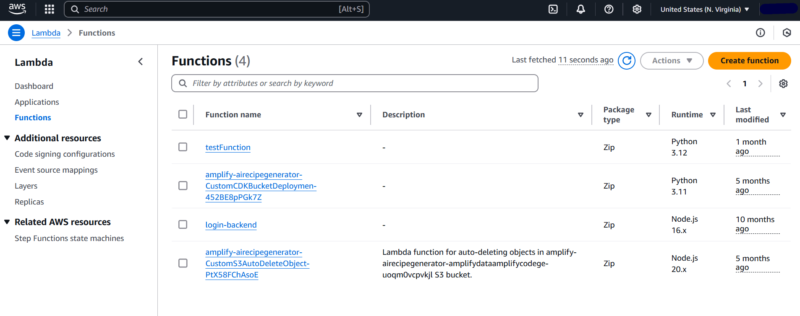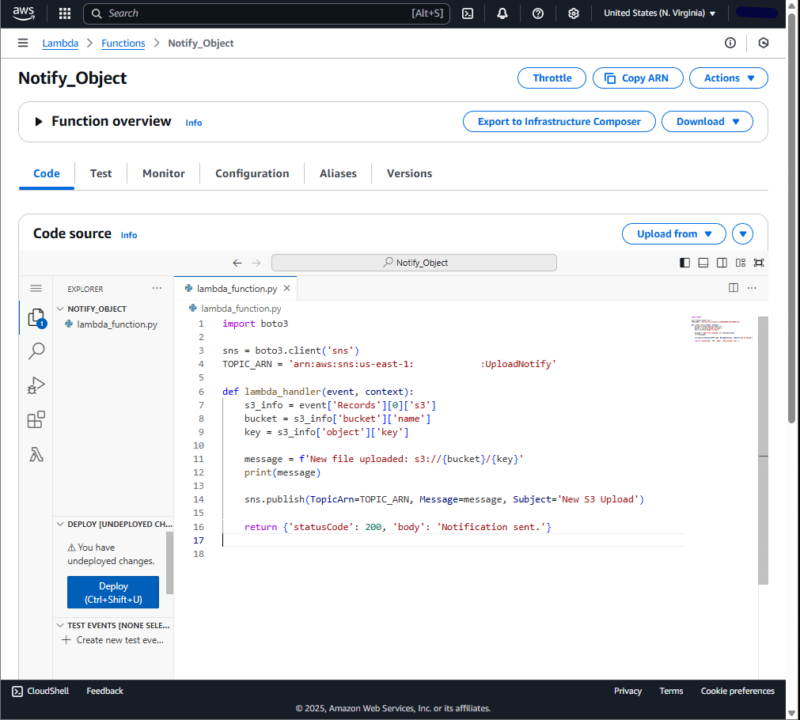What Is Serverless Computing? Meaning, Types, Benefits & Challenges
Have you ever found yourself wondering, “What is serverless computing?” Serverless computing is a powerful cloud execution model that enables developers to build and run applications without managing servers.
Serverless cloud computing is a modern technology for building cloud infrastructure. It redefines the application development model by decoupling code from runtime environments. The serverless framework introduces Function-as-a-Service (FaaS) execution models, where code runs as stateless applications that auto-scale on demand.
The term “serverless” does not mean that there’s no underlying infrastructure. It means that developers depend on the cloud service provider to manage the infrastructure. For anyone wondering how to become a DevOps engineer, mastering serverless computing is a crucial step.
Serverless adoption has helped organizations achieve greater agility by reducing the time taken during development cycles while optimizing cloud costs through the pay-per-use pricing model.
What Is Serverless Computing?
Serverless computing is a cloud-computing execution model that reduces the infrastructure required for deploying apps by relying on cloud-managed solutions. This decreases operational overhead and leads to faster deployment cycles, thus lightening the load for operations teams.
Serverless computing utilizes an event-driven approach and pay-as-you-go pricing. Functions run only when triggered. The cloud provider allocates resources as needed and shuts them down immediately afterward. The infrastructure is auto-scaled to the required capacity during execution, and the user is billed only for the compute time during execution.

deploy code without managing the underlying infrastructure.
AWS, Microsoft Azure and Google Cloud Platform all offer unique serverless services, with auto-scaling and pay-as-you-go pricing. Choosing the right platform depends on integration needs, language support and the existing cloud ecosystem.
Serverless Computing Types
Serverless computing encompasses different models that abstract infrastructure management while allowing developers to efficiently run and deploy applications. The models differ in execution style, use cases and the level of abstraction they provide.
- Function as a Service (FaaS): FaaS runs event-driven, short-lived functions that run in stateless containers. The cloud provider automatically deploys resources to run the function, scales it and shuts it down when the execution is complete. Examples of FaaS solutions are AWS Lambda, Azure Functions and Google Cloud Functions.
- Backend as a Service (BaaS): BaaS provides pre-built backend services such as authentication, database management and data synchronization. It provides fully managed services such as AWS Amplify and Google Firebase, which handle the backend tasks so developers can tackle frontend development and business logic.
- Serverless containers: Serverless container solutions handle provisioning, scaling and networking automatically. Developers package applications in containers and deploy them to a managed service, where the cloud provider dynamically allocates resources based on demand. Examples of serverless container services include AWS Fargate, Google Cloud Run and Azure Container Apps. Want to compare container tools? Our guide on Docker vs Kubernetes breaks down how they complement serverless workflows.
- Serverless databases: Serverless databases auto-scale, optimize performance and manage infrastructure with no need for manual intervention. They allocate resources dynamically based on usage, which ensures cost and performance efficiency. Azure Cosmos DB, Aurora Serverless and Google Firestore are some examples.
- Serverless edge computing: Serverless edge computing allows applications to process data closer to end users. This reduces latency, improves responsiveness and optimizes bandwidth by executing functions at edge locations rather than in centralized cloud regions. Examples include AWS Lambda@Edge and Cloudflare Workers. To see how edge computing compares with centralized cloud models — and where serverless fits into the mix — check out our full guide on edge computing vs cloud computing.
Serverless Computing Benefits
Serverless computing has greatly transformed how businesses are built and deployed by abstracting infrastructure development and management. Developers can focus on writing application code while cloud service providers take care of the infrastructure.
These efficiencies also support sustainability goals — our guide on cloud sustainability statistics explores how cloud models like serverless contribute to reduced emissions and smarter resource usage.
To see how serverless fits into the bigger picture — alongside AI, multicloud, and hybrid deployments — check out our full guide on cloud computing trends.
Some of the key benefits of employing serverless architecture include cost-efficiency, redacted operational overhead, faster development and time to market, and built-in high availability and fault tolerance.
- Cost-efficiency: Serverless computing follows a pay-as-you-go pricing model where users pay only for the execution time and resources that the applications consume. There are no charges for idle resources or over-provisioning, which makes it highly cost-efficient, especially for unpredictable and low-traffic workloads.
- Reduced operational overhead: In serverless technologies, the cloud service provider takes on all infrastructure management tasks. The developers create and upload the code, and the service providers manage the infrastructure that runs it.
- Faster development and time to market: Serverless computing eliminates infrastructure concerns and makes use of pre-built services such as authentication. This helps developers build and release features more quickly than in an environment where they have to set up and maintain servers. The modular nature of serverless functions encourages rapid prototyping and continuous deployment.
- Built-in high availability and fault tolerance: Serverless platforms are designed for high availability and fault tolerance. The functions are deployed across multiple availability zones, and the infrastructure is automatically monitored and repaired in the event of a failure.
Serverless Computing Challenges
Though serverless computing offers significant advantages to businesses, it also introduces unique challenges that developers must address when designing, deploying and maintaining serverless apps.
Some challenges associated with serverless computing include cold starts, vendor lock-in, limited execution time and resource constraints, and complex debugging and monitoring.
- Cold starts: These occur when a serverless function is invoked after being idle for a long time. The cloud provider must spin up a new runtime environment, which adds latency to the request. This may affect the user experience, especially in latency-sensitive applications.
- Vendor lock-in: Serverless platforms are deeply tied to their cloud provider’s ecosystem. Each provider has unique interfaces, services and event models that make migrating workloads between providers difficult.
- Limited execution time and resource constraints: Serverless platforms impose strict limits on function execution time, memory and CPU resources. Though the limits are sufficient in most cases, they can hinder workloads that require long-running processes, high memory consumption or intensive compute capacity.
- Complex debugging and monitoring: Since serverless applications are stateless and event-driven, they become difficult to debug. Capturing logs, racing execution flow and debugging errors in real time becomes challenging since functions execute code in short-lived ephemeral environments.
Serverless Cloud Computing Use Cases
Serverless has greatly revolutionized how businesses deploy scalable and cost-efficient applications without managing infrastructure. They leverage the event-driven execution and automated scaling that serverless applications offer so they can focus on innovation rather than operational overhead. We discuss common serverless computing use cases below.
Serverless Architecture Explained
Serverless architecture allows developers to build and run applications without managing the underlying servers. Developers focus on writing code, while the cloud provider handles infrastructure tasks like scaling, patching and monitoring. This speeds up development and enhances cost-efficiency, as clients pay only for the time during which their code runs.
Frontend vs Backend Infrastructure
The frontend is an application’s user interface, where the user interacts directly with the app. It involves the design, user interface and technologies that render the visual elements on devices. Frontend components, largely static websites and mobile apps are delivered through static hosting solutions such as AWS S3 or Firebase Hosting.
The backend handles server-side operations such as business logic, data processing and database management. Backend services are normally broken down into functions that are executed in response to events. When a user interacts with the frontend — for example, by submitting a form — an API request triggers a backend function and returns a response.
What Are Functions?
Functions are small, self-contained pieces of code that execute in response to specific triggers or events, such as HTTP requests or file uploads. Functions are stateless, meaning they do not retain any data between executions. When a function stops receiving requests, the cloud provider deallocates resources to optimize costs and resource usage.

Amazon SNS after an S3 file upload.
Development teams write functions in supported languages, such as Node.js or Python, and simply deploy them to cloud platforms that handle the runtime, scaling and fault tolerance. Functions are typically deployed using FaaS platforms such as AWS Lambda, Azure Functions or Google Cloud Functions.
How Secure Is Serverless Computing?
Serverless computing introduces a shared responsibility model for cloud security. Cloud providers secure the underlying infrastructure, while developers protect the code, data and access controls.
Cloud providers also offer built-in security features like automatic encryption and DDoS protection. However, misconfigurations, vulnerable dependencies or exposed API endpoints could pose risks.
Serverless architectures require careful design and monitoring. Their distributed and event-driven nature makes it harder to maintain visibility into application behavior, increasing the risk of misconfigured permissions or unmonitored data flows.
Developers should enforce least-privilege access, use secret-management tools and regularly scan for vulnerabilities to mitigate security threats.
Serverless vs PaaS, BaaS & IaaS
Serverless computing is often compared to other cloud service models, such as Infrastructure as a Service (IaaS), Platform as a Service (PaaS) and Backend as a Service (BaaS). Though these models aim at abstracting different layers of infrastructure management, they differ in how much control and responsibility they offer developers.
Infrastructure as a Service (IaaS)
The IaaS service model offers the most control. Cloud providers offer virtualized hardware resources such as compute, storage and networking, and users can provision and configure them as needed. Unlike serverless, IaaS requires users to manage the operating system, runtime and application dependencies.
Examples of IaaS services include Amazon EC2, Azure Virtual Machines and Google Compute Engine.
Backend as a Service (BaaS)
BaaS offers ready-made backend services such as authentication, databases and push notifications. Developers interact with the services via APIs without having to build or manage the backend logic. BaaS is especially useful for mobile and web apps that need standard backend functionality. AWS Amplify and Firebase are examples of BaaS services.
Platform as a Service (PaaS)
PaaS abstracts the underlying infrastructure and offers a managed platform where developers can build and deploy apps without worrying about servers and runtime environments.
However, PaaS involves configuring long-running application instances and managing resource allocations. Google App Engine, AWS Elastic Beanstalk and Azure App Service are examples of PaaS services.
Popular Serverless Computing Platforms
Serverless computing has become very popular as businesses take advantage of its benefits. To serve this need, each cloud service provider delivers its own serverless ecosystem with distinct tools, integrations and pricing models tailored for different use cases. Let’s look into the three main cloud providers and their offerings.
Amazon Web Services (AWS)
AWS is considered the pioneer of serverless computing thanks to its flagship offering, AWS Lambda. AWS Lambda allows developers to run code in response to triggers such as HTTP requests via API Gateway, file uploads to S3 or database events.
AWS also offers Aurora Serverless for databases and Fargate for serverless containers, making it a comprehensive choice for serverless architecture.
Microsoft Azure
Microsoft Azure provides a comprehensive serverless platform through Azure Functions. It supports languages such as C#, JavaScript and Python to write event-driven functions. Azure Functions integrates with services such as Azure Logic Apps and API Management, enabling developers to build complex workflows and automate cloud services.
- Azure Blob Storage: Hosts static web content.
- User Interaction: The user clicks a button to retrieve data.
- Azure API Management: The app calls a managed REST API endpoint.
- Azure Functions: A serverless function executes logic to fetch the relevant information.
- Azure Cosmos DB: Stores and returns the requested data.
Google Cloud Platform (GCP)
Google Cloud delivers serverless computing through Google Cloud Functions, a lightweight event-driven platform that easily integrates with GCP’s data and AI services. For complex workloads, GCP offers Cloud Run, which automatically scales stateless containers. GCP integrates with BigQuery for warehousing and Databricks for serverless analytics pipelines.
- Google Cloud Storage: Serves the frontend as a static website from a Google Cloud Storage bucket.
- User Interaction: The user clicks a button to trigger a data request.
- Google Cloud API Gateway: The request hits a managed API.
- Google Cloud Functions: Executes the backend logic to the request function.
- Cloud Firestore: Stores the data and serves it to the function.
What Are Kubernetes & Knative?
Kubernetes (K8s) is an open-source container orchestration platform designed to automate containerized application deployment, scaling and management. It provides a framework for resiliently running distributed systems and abstracts the underlying infrastructure. However, it requires manual capacity management configuration and lacks native support for event-driven architecture.
Knative is a Kubernetes-based platform that extends Kubernetes’ capabilities to support serverless workloads. It provides higher-level abstraction to deploy, scale and manage containerized functions or applications in a serverless manner. Knative runs on Kubernetes clusters and offers portability across clouds, on-premises and in hybrid cloud environments.
Kubernetes and Knative together form a powerful stack for building scalable, portable and modern cloud-native applications. Kubernetes provides low-level orchestration and infrastructure abstraction, while Knative offers higher-level developer experience for serverless applications.
Final Thoughts
Serverless architecture stands out as an essential model in modern application development. It empowers developers to focus on building features and solving business problems while the cloud provider handles the server management tasks. Businesses can leverage a serverless approach to streamline operations and reduce infrastructure costs.
Thank you for taking the time to explore serverless computing with us. Are you using serverless computing in your workloads? We would love to hear your thoughts — drop a comment below and join the conversation.
FAQ: Serverless Applications
Serverless is a cloud computing model in which developers write and deploy code without managing the underlying infrastructure. The cloud provider automatically handles the server provisioning, scaling and maintenance.
Examples of serverless use cases include using AWS Lambda for building APIs, Azure Functions for file processing or Google Cloud Functions for real-time data pipelines.
AWS serverless offerings include AWS Lambda for event-driven functions, API Gateway for HTTP triggers and DynamoDB, which is a serverless database. The services auto-scale and integrate with other tools such as AWS S3 and EventBridge.
In a serverless model, the infrastructure management function is abstracted from the user for the cloud provider to handle. This allows for automatic scaling and a pay-per-use pricing model. Server-based models require manual provisioning, configuration and scaling of servers.


